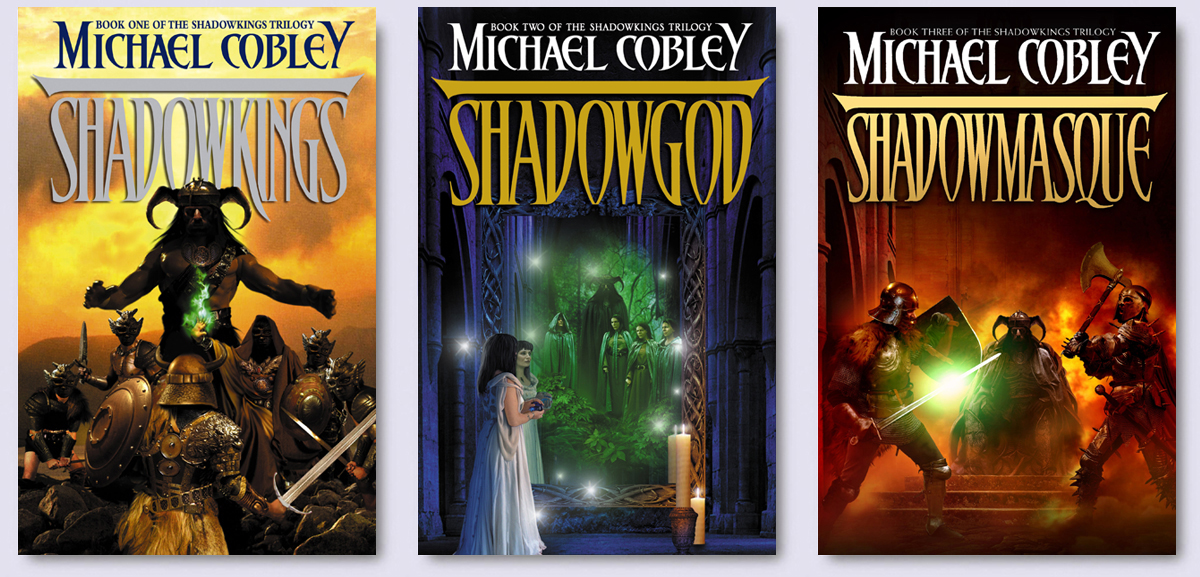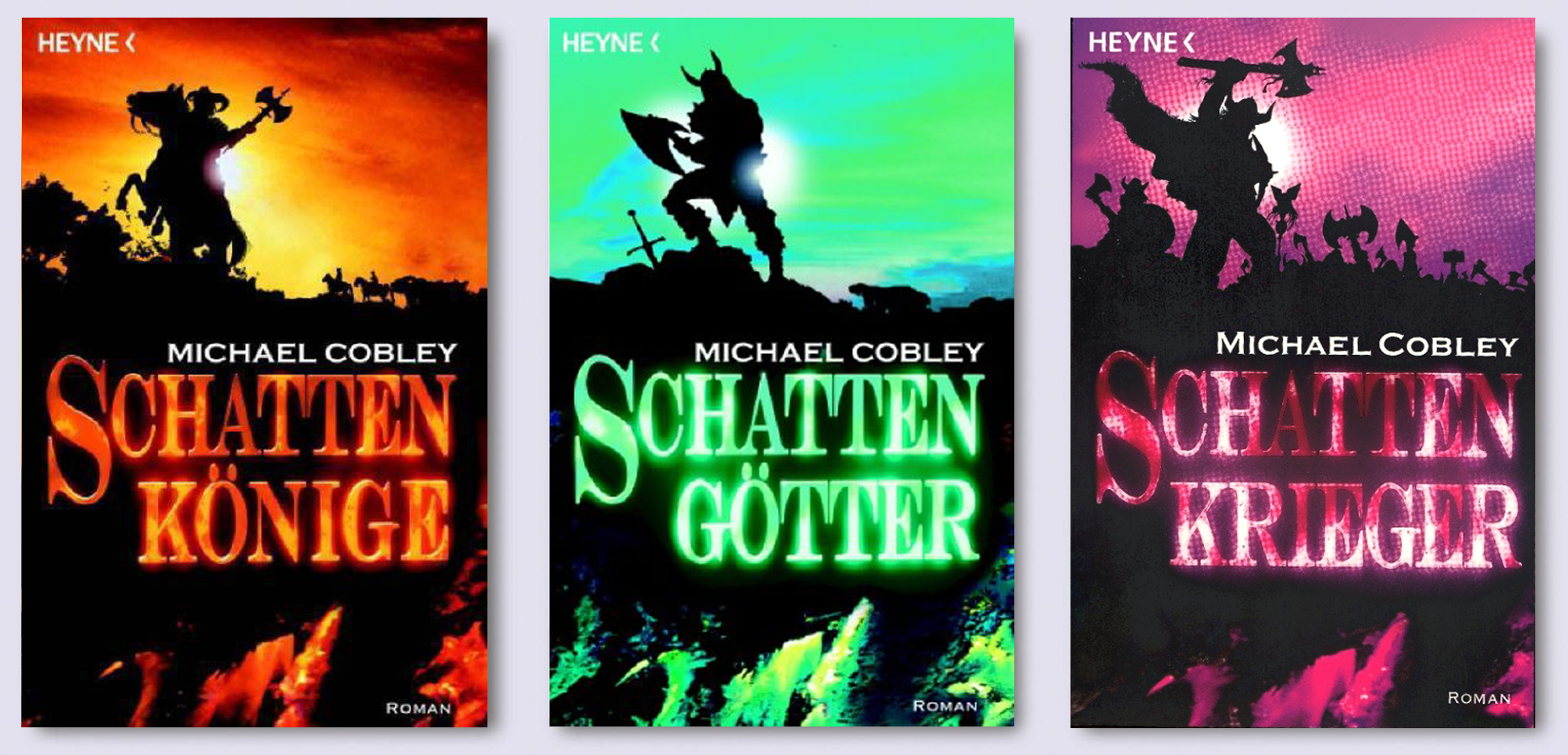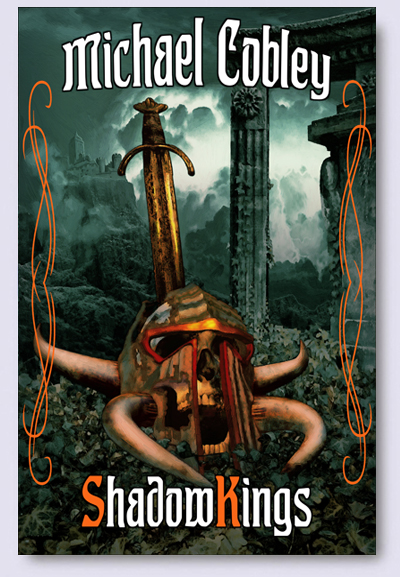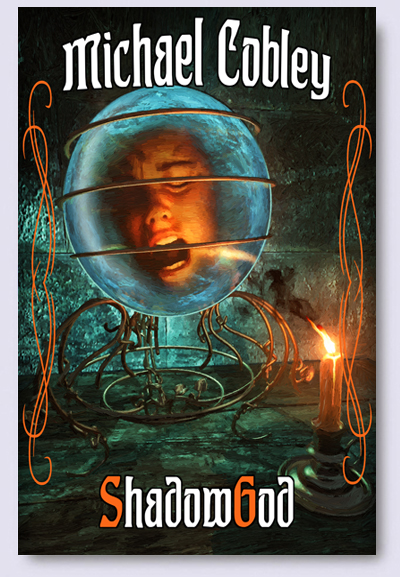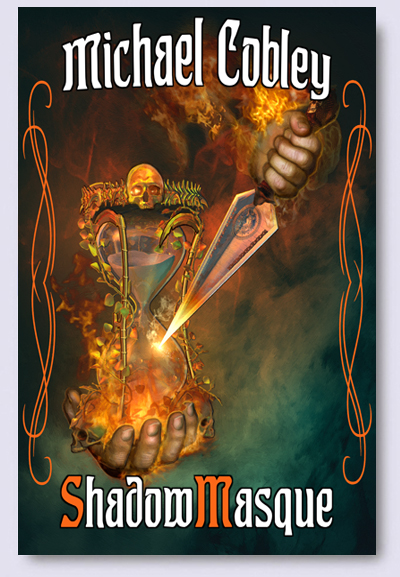 Michael Cobley is perhaps best known for his expansive space opera series, Humanity’s Fire, published in both the UK and US by Orbit Books. The fourth title set in the same universe, ANCESTRAL MACHINES, is due to be published later this year, also by Orbit.
Michael Cobley is perhaps best known for his expansive space opera series, Humanity’s Fire, published in both the UK and US by Orbit Books. The fourth title set in the same universe, ANCESTRAL MACHINES, is due to be published later this year, also by Orbit.
However, before his science fiction series became such a huge hit on both sides of the Atlantic, he was also a pioneer of Grimdark fantasy: his debut trilogy, Shadowkings, was first published between 2001-5, by Earthlight. Certainly, he was dabbling in the darker, grittier fantasy arena before it gained such prominence and popularity, and doing it very well, too – Jon Courtenay-Grimwood described the series, in his review for the Guardian, as ‘brutal, cruel and realistic in a way genre usually avoids.’ It was also described as ‘unconventional high fantasy’, but this was before the rise of grimdark.
Original Covers
You can read an interview with Michael about the series, here. He also spoke to Walker of Worlds at length about his writing, in 2009. In that interview, he gives a short take on the series: ‘The Shadowkings trilogy was a heroic fantasy trilogy that originally stemmed from the idea of – what if at the end of Lord of the Rings Sauron actually won but, crucially, overreached and screwed himself over? In Shadowkings, the Lord of Twilight has triumphed over the Khatrimantine Empire but at the moment of his triumph breaks into 5 separate entities which scatter across the world, manifesting as these 5 men with dark, demonic powers, the Shadowkings.’
The series – SHADOWKINGS, SHADOWGOD, and SHADOWMASQUE – will soon be released as an eBook through the JABberwocky eBook program, with brand new artwork, commissioned from Dirk Berger (who has also handled the excellent eBook covers for James P. Blaylock’s re-issues).
The rather bright German Covers
Audible Editions, 2014
With the newly released JABberwocky eBooks and Audible editions, we thought we’d share some information on the trilogy. Select foreign rights are still available.
A dark, epic fantasy.
Sixteen years it has been since the dazzling Khatrimantine Empire fell to the vast hordes of the Mogaun. Sixteen years since the invaders’ evil deity, the Lord of Twilight, was shattered into five hosts, five lost souls destined to become the Shadowkings.
Sixteen long years since the forces of the Earthmother and the Fathertree were defeated, and the Rootpower magic itself was destroyed… But for Suviel, one of the few surviving mages, it was not a final defeat. Nor was it so for Ikarno Mazaret, Lord Commander of the Knights of the Fathertree. They and their companions face a deadly struggle against terrifying odds in their fight for freedom.
Byrnak, one of the many warlords who squabble amid the Empire’s ruins, discovers that he is one of the five Shadowkings and thus compelled to bring the Lord of Twilight into fleshly being. Across the battlefields and dreamscapes of the land, he is driven ever closer to this goal.
Tauric is the lost heir to the Imperial throne. He must learn courage and the realities of command if he is to survive the battles that lie ahead. These lives and uncountable others will be changed forever when the Empire’s last valiant defenders take arms against ancient sorceries and new terrors.
Roz Kaveney described this as an ‘impressively unpleasant first fantasy novel… If it were not for its unrelenting bleakness, SHADOWKINGS would be a fairly standard story of apocalyptic evil and heroic good.’ Instead, Cobley takes a more ‘realistic’ approach to, for example, ‘how bad a battlefield or a ruined town smells,’ and makes the world’s ‘dark magic… appropriately sinister.’ Rather like Abercrombie before Abercrombie…? Of course, Cobley didn’t allow the bleakness of his creation to get in the way of telling a good story, and instead, as Infinity Plus wrote, the novel is ‘a pacey action and adventure story, packed with battles, rescues and political double-dealing… a refreshing and believable take on the Fight Against Insurmountable Evil Foes sub-genre, without dispensing with any of the familiar staples that make the genre what it is.’ Eternal Night described this as ‘a dark tale, hope being in short supply for most of the book.’ They also articulated what many have come to see as the main strength of the grimdark genre – specifically, that Cobley’s fantasy setting felt ‘very real… and the events and characters feel a lot more realistic than I’ve read in many fantasy epics over the years.’ Their conclusion? ‘[I]f you like the sound of a story based in a more unpleasant situation, where the struggle is somehow more believable, then I can recommend this book to you.’
SHADOWGOD continues the epic tale, begun in SHADOWKINGS, of resolve and sacrifice, and a world teetering on the brink of endless, terrible night A harsh winter is settling in across the land and the Shadowkings’ deepest, darkest plans are hatching…the worst is yet to come. Ikarno Mazaret, now Lord Regent, still grieves over the death of his beloved, the mage Suviel. Ranging forth from the city of Besh-Darok, he takes ever more perilous risks. Tauric has been crowned Emperor yet feel increasingly powerless to influence events. Despair begins to taint his every decision. Keren Asherol remains haunted by her shattering encounter with one of the Daemonkind, while her twin, the mirrorchild Nerek, is dogged by sinister omens. And far to the north the Shadowking Byrnak broods on his towertop. Mistrustful of his fellow-Shadowkings and harried by a ghostly fragment of the Lord of Twilight, he knows he must utterly crush the Imperial remnants and their allies, despite the powers of the goddess Earthmother.
The Guardian described SHADOWGOD as better than the previous novel, and ‘makes good use of the world Cobley has created’. The series, the reviewer said, offers ‘writing to rival David Gemmell.’ Review site Eternal Night, also enjoyed the second novel: ‘one of the most gritty, grimy and evocative fantasy worlds. The author’s description bring to mind an easy visualisation of the places his characters visit… There’s none of the sanitised fairytale fantasy world here… If your idea of fantasy is C.S. Lewis this is probably not your cup of tea, but if you want a rugged more realistic depiction of a dark ages world with magic thrown in then I would suggest you go out and buy book one, read it and then move straight into this volume.’
Emperor Magramon is dead and his only son, Ilgarion, will finally ascend to the Khatrimantine throne, guided by the Archmage Tangaroth and protected by the Iron Guard. But dark undercurrents are moving beneath the surface of life in Sejeend, the imperial capital, and the agents of an old and malign power are plotting and waiting. Only the Order of Watchers, a band of renegade mages, has any inkling of what is afoot and their investigations lead to grotesque and violent confrontations.
According to Infinity Plus, with this series Cobley took ‘traditional sword and sorcery to some new and perhaps uncomfortable places’, and in this final volume of the trilogy, ‘has succeeded in producing an unusually dark and claustrophobic piece of work.’ Cobley draws ‘characters with verve and style,’ wrote SF Crowsnest. ‘The plot was complex but clearly spun out, providing tantalising teasers at the end of each episode, which made me want to skip ahead to the next time that particular thread was picked up and woven.’ Continuing their support and praise for the series, Eternal Night wrote, ‘There is plenty here to keep any fans of high fantasy happy. The familiar elements are here, but don’t worry about them feeling borrowed or contrived. Cobley has presented his own fantasy world and characters, well rounded, fully explored and absorbing.’

